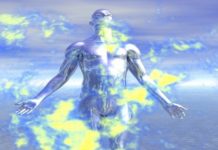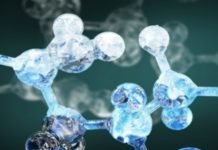Although the human genome has been completely read by DNA sequencing, it is not yet fully understood. Many (though probably not all) genes have been identified, yet much work still needs to be done to completely elucidate the biological functions of their protein and RNA products. But what is DNA? Where is it found? What makes it so special? How does it work? In this article, we will look deep into the structure of DNA and explain how it makes itself and how it determines all of your traits. First, let’s look at how DNA was discovered.
Friedrich Meischer, a Swiss biologist isolated DNA from pus cells on bandages. Although Meischer suspected that nucleic acids might contain genetic information, So scientists had theorized about the informational role of DNA for a long time, but nobody knew how this information was encoded and transmitted. Many scientists guessed that the structure of the molecule was important to this process.
DNA is one of a class of molecules called nucleic acids. Nucleic acids were originally discovered in 1868 by Meischer. But it was Watson and Crick who used molecular modeling techniques and data from other investigators (including Maurice Wilkins, Rosalind Franklin, Erwin Chargaff and Linus Pauling) to solve the structure of DNA. Watson, Crick and Wilkins received the Nobel Prize in Medicine for the discovery of DNA’s structure.

The term double helix became popular after being publish in the book The Double Helix: A Personal Account of the Discovery of the Structure of DNA, by James Watson. In molecular biology, the term double helix refers to the structure formed by double-stranded molecules of nucleic acids such as DNA and RNA. The double helical structure of a nucleic acid complex arises as a consequence of its secondary structure, and is a fundamental component in determining its tertiary structure.
Characteristics of DNA:
[dcs_ul_list type=”squ-blue”]
- Each person has a unique DNA profile (except identical twins)
- Each person’s DNA is the same in every cell
- An individual’s DNA profile remains the same throughout life
- Half of your DNA comes from your motherand half from your father
[/dcs_ul_list]
Uses of DNA:
[dcs_ul_list type=”squ-blue”]
- Crime solving – matching suspect with evidence
- Accident victims – after airplane crashes
- Soldiers in war – who is the “unknown” soldier
- Paternity testing – who is the father
- Inheritance claims – who gets the money
- Missing persons investigations – who’s body
- Convicted felons databases – cold cases solved
[/dcs_ul_list]
RH Negative blood mystery:
The World Health Organization has been conducting researches into the DNA of Icelandic peoples. They are taking samples for laboratory research. Tracing the history of mankind across the world is difficult. This is especially true when trying to match legend and myth with actual archeological facts. But, when different cultures mix so do their genes. Unlike nuclear DNA mitochondrial DNA is inherited only from your mother. This makes tracing peoples history a little easier. However, one simple method of assessing relationships between cultures is their blood group. Various proteins in the blood have been named A and B. Some people have only one or the other (A and B groups), some people have both (AB) and some none (O group). There is also another protein called the Rhesus factor that some people have and others do not.
If man is evolved from apes then there is something very strange since the AB group is almost non-existent in apes, and O is minimal! Chimpanzees are mainly group A (never B), and Gorillas are mainly group B (never A). Similarly, the early Europeans had a high percentage of group A, whilst the Asiatic races had a high percentage of B. So the idea has been proposed that chimpanzees developed into Cro-Magnon man, then Europeans, whilst Gorillas developed into the larger brained Neanderthals then into the Asians. To account for group O, there must have been a third group of proto-humans who were O. For group O the Bororo, Mayans, and Incas are all virtually 100% group O. And the Navajos are 73% group O, whilst the Blackfoot Indians are 82% group A. As for group AB, which is rare, the Peking Chinese, Korean, Japanese show a good 10-18%, whilst the Poles, Czechs, and Hungarian Gypsies are close behind (9- 10%). It is believed that the O blood group is the blood of royalty (blue blood) that stems from an Atlantean heritage. The races that possess this blood (called the Red races) are races of the Americas, of the Canary Islands, the Basques, Scandinavians, Celts, as well as certain Polynesian and Indonesian peoples.
But there are some exceptions to this in that the Tartars and Hindus show also strong AB. Whilst most groupings are generally split evenly, there are some astonishingly pure groupings. These must be accounted for in any history of man!
Such is the mystery of DNA which is still undergoing extensive research & here in Search of Life we will continue to pursue it.



































